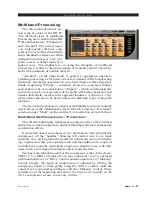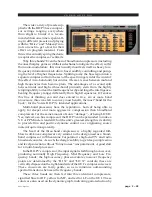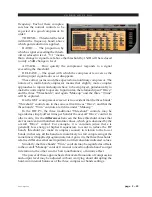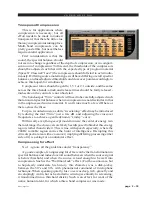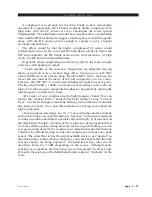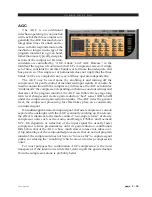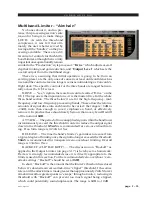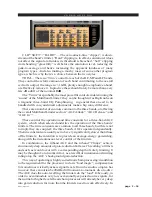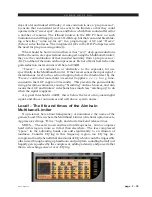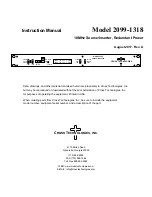
V O R S I S H D P 3 G U I
page 2 – 23
HD P3 / Aug 2006
Output Limiter: In depth
To achieve guaranteed lack of overshoot, advanced look-ahead and up-
sampling algorithms are employed, to respectively catch most overshoots
before they occur, and mitigate untoward “aliasing” effects (“grittiness”)
that plague lesser digital limiters. When set up correctly, the limiter will
not allow excess output at all, and do so gracefully and sonically transpar-
ently.
“Look-ahead” refers to the technique of fractionally delaying the input
signal such that the limiter’s detecting sidechain has a chance to react,
generating an appropriate control signal at the exact time it is required to
control the passing audio signal. A short delay is used so as not to incur
problematic additional latency, and also to minimize “escapees”. These
refer to impulses and transients which are shorter than the attack time of
the limiter, and which, obviously, cannot then be accurately captured and
controlled regardless of the look-ahead technique.
The longer the attack time, the more energy escapes the limiter; at (not
very great) extremes, a clipper - by definition zero-attack time - allows no
escapees, while a 100mS attack time is essentially an averaging detector,
allowing sometimes wildly high instantaneous peaks through.
To this end the HD P3’s look-ahead limiter with attack times shorter
than 1mS dialled in (0.5mS is the specified and recommended value)
captures almost all transients found in program material; the downstream
zero-attack-time limiter - “clipper” - takes care of the rest. A release time
of 50mS (recommended) on the limiter will catch and control signal peaks
quite transparently; by itself it can add a considerable amount of “LOUD”,
but at the cost of the well-known sonic detriments that come from
excessive broadband limiting – and which are the reasons for multiband
processing in the first place! It is recommended that the output limiter just
be used to control signal peaks just a few dB deep - to this degree it is quite
transparent. Deep processing should be left to either of the triband
processors.



















